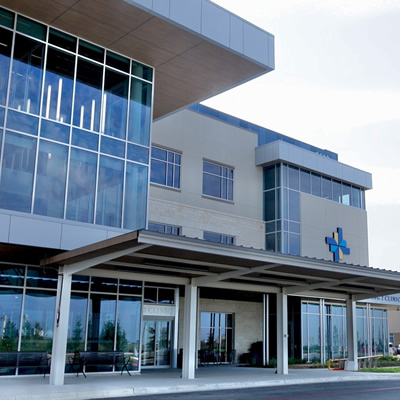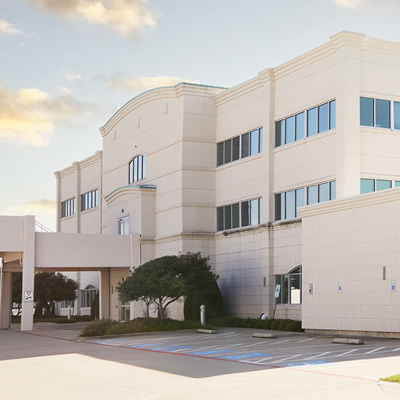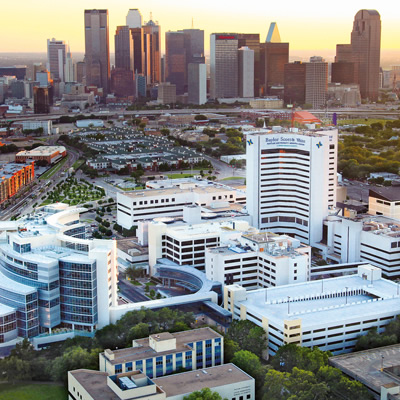What is a labral tear in the shoulder?
A shoulder labral tear, also known as a shoulder joint tear or glenoid labrum tear, happens when the cartilage ring around the shoulder socket (the labrum) is torn due to high stress or overuse. These tears are common in athletes and people who perform repetitive activities, such as weightlifting or throwing.
Anatomy of the shoulder
The shoulder is a ball-and-socket joint made up of three bones:
- The humerus (upper arm bone)
- The scapula (shoulder blade)
- The clavicle (collarbone)
The rounded top of the upper arm bone (humerus) fits into a shallow socket in the shoulder blade called the glenoid. A soft tissue ring, called the labrum, helps keep the joint stable and serves as an attachment site for ligaments and tendons, including the biceps.
Types of labral tears of the shoulder
There are several types of shoulder labral tears, all defined by where they occur in the joint. Your shoulder joint includes a ball—the head of your arm bone, or humerus—that fits into a socket—the glenoid. Labral tissue runs around the rim of the glenoid and connects to stabilizing ligaments of the shoulder.
Bankart tear
This tear, also called a Bankart lesion, occurs near the front of the labrum near the bottom of your shoulder joint. It typically happens because of an event where the shoulder joint becomes unstable, known as a shoulder instability episode.
SLAP tear
A SLAP tear, or superior labrum anterior to posterior tear, occurs at the top of the labrum and runs from the front to the back of the socket (glenoid). This type of tear can cause pain in the front of the shoulder due to the biceps tendon attaching at the site of the injury.
Posterior labrum tear
This tear happens in the back of your shoulder joint and can occur due to sudden injury or normal age-related wear.
Shoulder labral tear symptoms
For some people, the first symptom of a labral tear is a dull ache deep within the shoulder. For others, the shoulder pain can be more sudden, severe and sharp. At first, you might only feel the discomfort when you lift your arm over your head. A sudden tear from an accident or fall can cause immediate, intense pain and weakness in your upper arm.
Common symptoms of a labral tear in your shoulder include:
- Feeling like your shoulder might pop out of the socket
- Pain caused by raising or stretching your arm behind your head
- Popping noises or a grinding sensation when you move your shoulder
- Pain with certain activities, like throwing or reaching above your head
- Shoulder weakness or instability that makes it a struggle to lift items
When to see a doctor
You should see your doctor if your shoulder and arm pain are persistent and don't get better with at-home treatments or pain-relieving medications. Your doctor should also know if your shoulder discomfort interferes with your day-to-day activities or a good night’s sleep. If you notice redness or swelling in your shoulder joint or your shoulder or arm suddenly becomes weak, see your doctor immediately.
Causes of shoulder labral tear
A labral tear can be the result of chronic injury, overuse, age-related wear or acute trauma, such as a dislocation.
Chronic injury and overuse are the most common causes of a shoulder labral tear. Sports, exercises and occupations that require repetitive overhead motion of the arm and shoulder can also cause labral tears.
Traumatic injuries that can cause labral tears include:
- Falls or bracing yourself to stop a fall
- Injuries involving force on the shoulder
- Intense pulling on the shoulder, for example, lifting a heavy object
Risk factors
Anybody can experience a labral tear, but certain factors, some in your control and others you can’t do much about, can raise your risk:
- Age: Labral tears can be caused by normal wear and tear that happens with aging, putting people over 40 at greater risk.
- Occupation: People whose jobs require repetitive overhead motions, such as painters, carpenters and mechanics, have a higher risk for labral tears.
- Sports: Athletes, especially baseball pitchers, tennis players and swimmers, are at a greater risk for rotator cuff tears. These activities involve overusing the shoulder, which can lead to injury.
- Shoulder abnormalities: Certain abnormalities in the shoulder joint, such as shoulder instability, can increase the risk of a labral tear.
Complications
The severity and location of a labral tear, along with any other shoulder injuries like a rotator cuff tear, can affect the likelihood of complications. Potential complications of an untreated labral tear include:
- Chronic pain and instability of the shoulder and arm
- Reduced range of shoulder motion
- Osteoarthritis can cause pain and potential joint damage
- Shoulder popping, catching, locking or grinding in the shoulder joint
- Weakness of the shoulder joint, making it difficult to lift your arm
How is a shoulder labral tear diagnosed?
Your shoulder joint is very complex, so diagnosing labral tears can be difficult. The process typically starts with a physical exam that allows your doctor to ask about symptoms and check your shoulder’s range of motion. After the exam, your doctor may order imaging tests that offer more detail than a physical exam can provide and confirm any findings.
-
Medical history and exam
Because labral tears can have several causes, your doctor will want to determine how your injury occurred and whether your symptoms appeared suddenly or over time. During your physical exam, your doctor will test your shoulder’s range of motion and arm strength by having you move your shoulder in different directions.
-
Imaging tests
After your exam, your doctor may order imaging tests to locate damage in your shoulder and try to identify which type of tear you have. Those tests may include:
- CT scan or MRI scan: These imaging tests show soft tissues, including your labrum. Your doctor may order these tests with contrast dye to better view a tear.
- X-ray: While a labral tear won’t appear on an X-ray (this test shows bones but not soft tissues), your doctor may order one to rule out other possible conditions, such as bone spurs and arthritis.
- Diagnostic arthroscopy: Arthroscopy is a procedure used to diagnose and treat joint issues. A small camera (arthroscope) is inserted through a tiny incision in the shoulder, allowing the doctor to see the labrum and other structures, helping to confirm the presence and severity of a tear.
Labral tear shoulder treatment
Not all labral tears require treatment, especially if they’re minor. However, your doctor may start with nonsurgical care, including pain-relieving medications, rest and physical therapy, to relieve your symptoms so the tear can heal over time. Depending on your type of tear, your general health and other factors, your doctor may recommend surgery to repair the tear.
Medication
Some types of labral tears need only rest and pain medications to heal and get your shoulder functioning again. Your doctor may suggest:
- Nonsteroidal anti-inflammatory drugs (NSAIDs): Aspirin, ibuprofen and naproxen sodium are available over the counter and reduce inflammation that causes pain. If over-the-counter medications aren’t effective, your doctor can prescribe stronger NSAIDs.
- Cortisone injections: These injections deliver a steroid called cortisone directly to the site of pain in your shoulder.
Therapy
Recovering from a shoulder labral tear often involves physical therapy to gradually rebuild strength in the shoulder, arm and back muscles. Strengthening these surrounding muscles helps reduce the stress placed on the labrum, giving it time to heal. Physical therapy also plays a key role in stabilizing the shoulder joint, relieving pain, improving range of motion and flexibility, and preventing further injury.
In addition to physical therapy, occupational therapy can help you safely perform everyday activities without aggravating your shoulder. This might include learning how to lift and carry items, such as groceries, or adjusting the way you reach, push or pull objects. Occupational therapists can also recommend changes to your workspace or daily routine to minimize strain on your injured shoulder. These combined therapies work together to restore function, prevent reinjury and help you return to your normal activities.
Surgery
Nonsurgical treatments often relieve symptoms and heal shoulder labral tears. However, if these measures don’t work or symptoms return, surgery may be recommended. For severe or unstable labral tears, shoulder arthroscopy is often the preferred option. This minimally invasive procedure uses small incisions, helping you recover faster and with less pain. You’ll receive either a nerve block to numb the area and/or general anesthesia to put you to sleep.
During the procedure, a surgeon inserts a thin, flexible tool with a camera (arthroscope) through one incision to guide the repair. Small instruments are inserted through another incision to repair or remove damaged tissue. This may include reattaching the torn labrum to the shoulder socket or arm bone. Surgery typically takes less than an hour, and most people go home the same day.
Find specialized care for shoulder pain
At Baylor Scott & White, we have multiple locations across North and Central Texas to provide you with access to expert care. Whether you're seeking diagnostic testing, treatment options or ongoing support for frozen shoulder, our teams are here to help you.

Baylor Scott & White Clinic - Pflugerville Medical Center Building 2
2600 E Pflugerville Pkwy Building 2, Pflugerville, TX, 78660- Monday: 8:00 am - 5:00 pm
- Tuesday: 8:00 am - 5:00 pm
- Wednesday: 8:00 am - 5:00 pm
- Thursday: 8:00 am - 5:00 pm
- Friday: 8:00 am - 5:00 pm

Baylor Scott & White Orthopedic Associates of Dallas - Complex Shoulder Institute
1631 Lancaster Dr Ste 230, Grapevine, TX, 76051- Monday: 8:00 am - 5:00 pm
- Tuesday: 8:00 am - 5:00 pm
- Wednesday: 8:00 am - 5:00 pm
- Thursday: 8:00 am - 5:00 pm
- Friday: 8:00 am - 5:00 pm

Baylor University Medical Center, part of Baylor Scott & White Health
3500 Gaston Ave , Dallas, TX, 75246Hours of Operation
Hours of Operation
Office Hours
Frequently asked questions
-
Can a labral tear in the shoulder heal itself?
Yes, in some cases, a labral tear in the shoulder can heal on its own, but you will also need to rest your shoulder and have physical therapy. These tears are usually not very severe.
-
What does a shoulder labral tear feel like?
A labral tear can cause a deep, dull ache or, if caused by an injury, sudden, severe, sharp pain. For tears related to overuse or wear, you might only feel the pain when you perform activities that strain your shoulder. Some people also feel a grinding, clicking, popping or catching sensation.
-
Can shoulder labral tear cause nerve pain?
Yes, a shoulder labral tear can cause nerve pain. When the labrum tears, it may lead to new nerve growth or cause a cyst to press on a nerve, leading to pain or weakness. This can affect your shoulder’s ability to move properly, causing discomfort or difficulty with certain motions.
-
Can a shoulder labral tear cause numbness?
Yes, a shoulder labral tear can cause numbness or tingling in the shoulder, arm or hand. This happens when the tear puts pressure on nearby nerves. A specific type, called a SLAP tear, can also cause weakness or a "dead arm" feeling, especially in athletes.
-
How long does a shoulder labral tear take to heal?
Recovery time for a shoulder labral tear varies based on treatment and severity. Nonsurgical recovery may take a few weeks to months. Surgery typically takes several months, with athletes needing up to a year. Factors like tear location, healing and activity level can influence how long it takes to heal.